It’s Day #27 in the BBA Challenge and we’re making Portuguese Sweet Bread, is made from flavorful, enriched dough that reminds me of baking Holiday cookies because of the citrus flavorings. 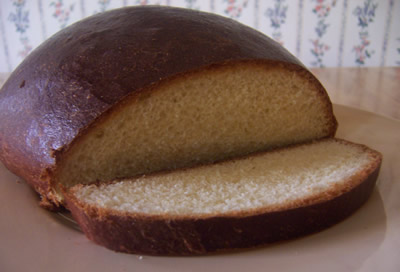 This dough is so flavorful, I wanted to make cookies out of it instead of bread. It uses some of the same flavorings that my favorite Holiday sugar cookie recipe uses, but it’s an enriched yeast bread. Delicious! I loved making this bread but it took all day and most of the evening to do it. Don’t let that scare you – most of the time is spent fermenting and proofing the dough, so it really is just a matter of timing. If you plan to make this bread, be sure to start early in the day. It’s definitely worth it!It just so happens, that the Artisan Bread Baker’s Group chose Portuguese Sweet Bread for the Bread of the Month this month which worked out great since I was already planning on making it for the BBA Challenge.
This dough is so flavorful, I wanted to make cookies out of it instead of bread. It uses some of the same flavorings that my favorite Holiday sugar cookie recipe uses, but it’s an enriched yeast bread. Delicious! I loved making this bread but it took all day and most of the evening to do it. Don’t let that scare you – most of the time is spent fermenting and proofing the dough, so it really is just a matter of timing. If you plan to make this bread, be sure to start early in the day. It’s definitely worth it!It just so happens, that the Artisan Bread Baker’s Group chose Portuguese Sweet Bread for the Bread of the Month this month which worked out great since I was already planning on making it for the BBA Challenge.
Portuguese Sweet Bread
Makes:
2 Loaves
Adapted from Bread Baker’s Apprentice by Peter Reinhart.
Sponge
- 1/2 cup (2.25 ounces or 64g) unbleached bread flour
- 1 T. (.5 ounce or 14.18g) granulated sugar
- 2 1/4 tsp. (.25 ounce or 7.08g) instant yeast
- 1/2 cup (4 ounces or 114g) water, at room temperature
Dough
- 6 T. (3 ounces or 83g) granulated sugar
- 1 tsp. (.25 ounce or 7.08g) salt
- 1/4 cup (1.25 ounces or 35.44g) powdered milk
- 2 T. (1 ounce or 28g) unsalted butter, at room temperature
- 2 T. (1 ounce or 28g) vegetable shortening
- 2 large (or 94g) eggs
- 1 tsp. (.17 ounce or 5g or 5ml) lemon extract
- 1 tsp. (.17 ounce or 5g or 5ml) orange extract
- 1 tsp. (.17 ounceor 5g or 5ml) vanilla extract
- 3 cups (13.5 ounces or 382g) unbleached bread flour
- Up to 6 T. (3 ounces or 84g) water, at room temp
Egg Wash
- 1 egg, whisked with 1 tsp. water until frothy
Making the Sponge
Make a sponge by stirring together the flour, sugar, and yeast in a bowl. Then add the water and stir until all the ingredients are hydrated and make a smooth batter. Cover the bowl with plastic wrap and let the dough ferment at room temperature for 60 to 90 minutes, or until the sponge gets foamy and seems on the verge of collapse.
Making the DoughTo make the dough, combine the sugar, salt, powdered milk, butter, and shortening in a large mixing bowl or in the bowl of your electric mixer.
Mix in the sponge and the flour. Add water as necessary to make a very soft dough.
Kneading the Dough
Knead the dough by hand or use the dough hook on your mixer. I decided to knead it by hand. I don’t like to miss out on this part.
The finished dough will be very supple and soft, easy to knead, and not wet or sticky. In other words, perfect! It will take about 15 minutes to achieve the right consistency. This is because dough with high amounts of fat and sugar takes longer to develop the gluten.
Fermenting the Dough
Lightly oil a larger bowl and transfer the dough to the bowl. Roll it around to coat it with oil and cover the bowl with plastic wrap. Ferment the dough at room temperature for 2 hours, or until the dough doubles in size.
Shaping the Boules
Remove the dough from the bowl and divide it into 2 equal pieces.
Form each piece into a boule (refer to page 72). Lightly oil two 9-inch pie pans and place 1 boule, seam side down, in each pan.
Proofing the LoavesMist the dough with spray oil and loosely cover with plastic wrap. Proof the loaves at room temperature for 2 to 3 hours, or until the dough fills the pans fully, doubling in size and overlapping the edges slightly. I proofed my dough for 7 hours and it still didn’t completely fill the pan but I decided to bake it anyway at this point.
See that little dent in the left side of the loaf? I dropped the extract bottle on it. Oops!Gently brush the loaves with egg wash. Preheat the oven to 350 degrees F with the oven rack on the middle shelf.
Baking the LoavesBake the loaves for 50 to 60 minutes.
After about 30 minutes, check the loaves and if necessary, rotate 180 degrees for even baking. Due to the high amount of sugar, the dough will brown very quickly. It will get darker as the center gradually heats through, but it will (should) not burn.
The final color will be a rich mahogany brown.
Cooling and Serving the Loaves
Remove the bread from the pans and place on a wire rack to cool. The bread will soften as it cools and will become a very soft, squishy loaf. Let it cool for at least 90 minutes before slicing or serving. Man, that’s the hardest part!
Here is the cooled and sliced loaf. Delicious!
Thank you for joining me this week in the Bread Baker’s Apprentice Challenge.
The next bread in Bread Baker’s Apprentice Challenge is Potato Rosemary Bread. I’m looking forward to making this flavorful and delicious bread.
Happy Baking!
Cathy
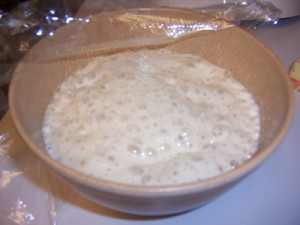
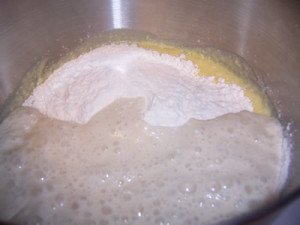
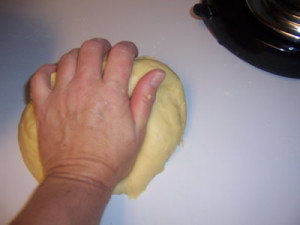
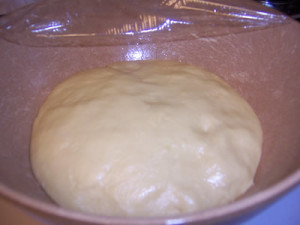
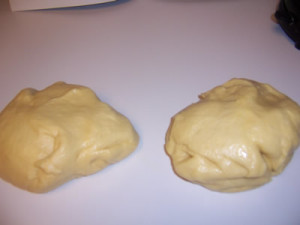
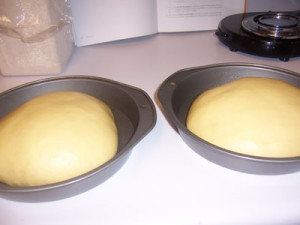
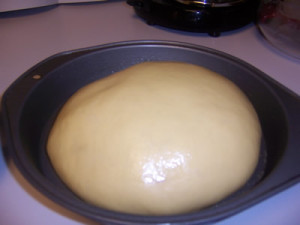
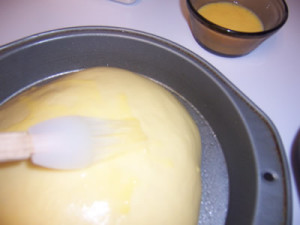
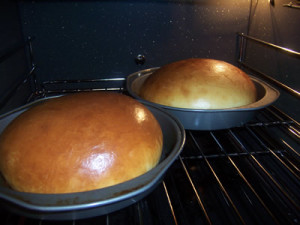
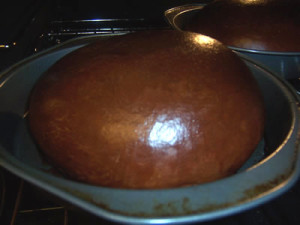
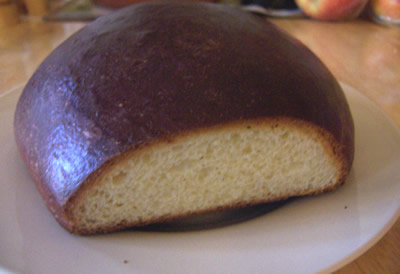
carla says
They look delicious! I got a late start on the BBA and am still back in the C’s (ciabatta to be precise). Thanks for the photos and inspiration.
Cathy (breadexperience) says
Thanks Carla! I’m glad you joined the challenge. Better late to the party than to miss all the fun. Just keep on keeping on! Happy Baking!
Cristie says
Your loaves look beautiful, the color and shape are perfect and the crumb is . . . right on. I’m sure it tastes fabulous as well. Happy Thanksgiving!
Cathy (breadexperience) says
Thanks Cristie! Happy Thanksgiving to you as well!
misterrios says
The loaves look great! The browning is just amazing.
Mine just came out of the oven and I can’t wait to dig in!
Cathy (breadexperience) says
Thanks misterrios! I was a little skeptical of letting them brown that much; thought they might burn, but they turned out ok. Hope you enjoy yours.
Anonymous says
Cathy, thanks for the wonderful instructions! I first saw this recipe on another website, but without the photos and helpful details I found here. I have now tried to make this bread twice, alas with no success! The thing refuses to rise. The starter looks just right, the dough feels soft and not too stiky or too dense, I knead (1st time with the mixer, 2nd time by hand), I make sure the temperature is right for the first rise. And then it just does not rise. At all. Any idea what can be wrong?
Cathy (breadexperience) says
Hi Anonymous! Are you saying the dough doesn’t rise in the bowl for the first rise? That’s odd! Is your sponge active?
I had a little trouble getting the loaves to rise on the second rise. It took forever. According to Peter Reinhart, it can take anywhere from 2 to 3 hours or more. It took mine a lot longer than that – about 7 hours.
Anonymous says
Cathy, yes, the dough does not rise on the 1st rise! The sponge looks exactly like in your photos – it takes about 90 minutes, but it doubles in size and looks all fragile and bubbly. So that must mean the yeast are fine, right? But the dough does not rise. I knead it, spray it with oil, put it into a warm place to rise, but it does not rise at all, even if left there overnight…
Jαnnαhツ says
looks delicious! i’m getting hungry now!
Izzy says
Hello 🙂
I’d like to know if I can replace the eggs in this recipe for another ingredient as I don’t appreciate much eggs in bread. May the ingridient be yogurt, for example?
Thank you very much 🙂
Bete
Cathy W. says
I haven’t made this bread using yogurt instead of eggs, but you can certainly try it.